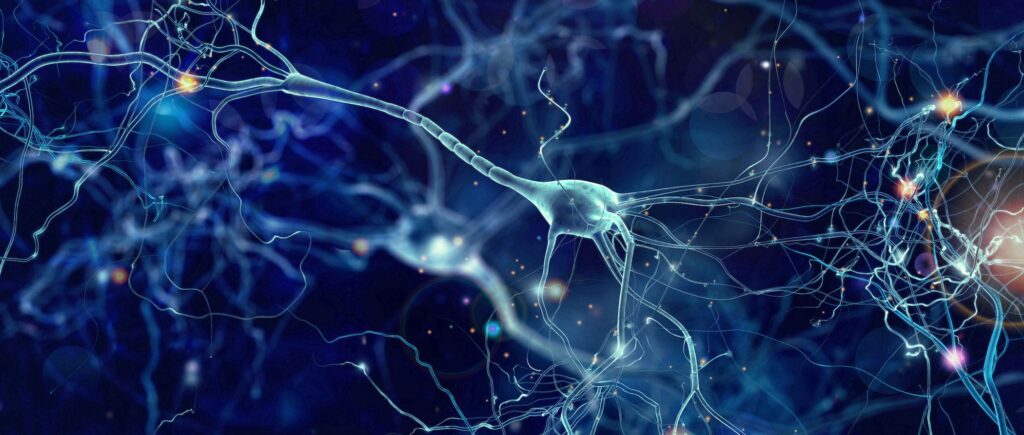

The human body is a complex machine that requires constant regulation. The body’s regulatory systems work in real-time to respond to external triggers like stress, temperature changes, pain, and hormonal changes, helping your body to find optimal health, wellness, and balance long-term.
We have a total of 11 major organ systems and a handful of key regulatory systems (and rhythms) that work synergistically to keep our bodies happy, healthy, and regulated each and every day.
Understanding how these systems work, how to keep them in balance, and how to recognise signs of imbalance is the first step forward in long-term health.
Didn’t know you had one?
You’re not alone.
The Endocannabinoid System (ECS) is a complex system of receptors and chemical messengers that help regulate various functions in the body, including sleep, appetite, mood, and pain sensation. Only discovered in 1988 the ECS is now referred to as one of the most important physiological systems and is known as your body’s ‘Master Regulator’.
The ECS works by producing endocannabinoids, which are naturally occurring compounds that bind to cannabinoid receptors in the central and peripheral nervous systems. This binding helps regulate the communication between nerve cells and modulate the release of neurotransmitters, promoting a state of balance and homeostasis.
A dysregulated ECS can result in various health problems, including mood disorders, sleep disturbances, anxiety, depression, and chronic pain. Symptoms of a dysregulated ECS may include changes in mood or appetite, sleep disturbances, and increased sensitivity to pain. If you suspect that your ECS is dysregulated, it’s important to seek professional medical advice and work with a healthcare provider to determine the best course of action.

The nervous system is made up of two parts, the Central Nervous System (CNS) and the Peripheral Nervous System (PNS), with both playing a critical role in regulating and controlling balance, pain, inflammation, and stress in the body.
The CNS consists of the brain and spinal cord and the PNS includes all of the nerves outside of the CNS. These two parts work synergistically to signal pain, inflammation, or dysregulation in the body to the brain, and to then carry chemical signals to these parts to regulate and rebalance the dysregulation in real-time.
The nervous system also helps to regulate stress, inflammation, and pain by releasing neurotransmitters that communicate with other parts of the body. The nervous system can also stimulate the release of hormones, such as cortisol and adrenaline, which help regulate the body’s stress response.The nervous system can also help regulate inflammation by modulating the immune response, and it can help regulate pain by transmitting and modulating pain signals.
The body’s endocrine system helps regulate various physiological functions by producing and secreting hormones that influence things like growth and development, metabolism, and sexual function. Hormones are chemical messengers that travel through the bloodstream and bind to specific receptors on target cells, to create reactions in the body.
The endocrine system also consists of several glands, including the pituitary gland, thyroid gland, adrenal glands, and pancreas, which produce hormones that regulate sleep and wake cycles, stress, energy, and hormonal cycles.
A dysregulated endocrine system can lead to various health problems, including hormonal imbalances and disorders such as hypothyroidism, hyperthyroidism, diabetes, and infertility. Red flags associated with a dysregulated endocrine system may include chronic fatigue, changes in weight (gain or loss), skin and hair, mood, and sexual function.
The body’s sensory system is responsible for receiving and processing sensory information from the environment and transmitting it to the brain for interpretation. The sensory system includes various specialised receptors in the skin, eyes, ears, nose, tongue, and joints that detect changes in light, sound, temperature, pressure, and other stimuli. This information is then transmitted to the brain through the peripheral nervous system (PNS), where it is interpreted and used to regulate various functions in the body.
A dysregulated sensory system can result in sensory processing disorders including oversensitivity or under sensitivity to stimuli, difficulties with motor coordination, and difficulties with attention and focus. Over or under stimulation can play a role in sleep disorders, mood swings, anxiety, depression, and more.

Circadian Rhythm, also known as the body’s internal biological clock, regulates various functions in the body, including sleep, hormone secretion, and metabolism. Circadian rhythm is controlled by a group of neurons in the brain that are sensitive to light and dark, which sends signals throughout the body that it’s time to get energised, or to decompress and rest. This internal clock helps to coordinate the body’s functions with the 24-hour cycle of the day, promoting a state of balance and homeostasis.
A dysregulated circadian rhythm can quickly lead to sleep disorders, insomnia, mood disorders, hormonal imbalances, and sluggish metabolism. It is also the cause of ‘jet lag’. Symptoms of a dysregulated circadian system can include difficulty falling asleep or staying awake, grogginess or fatigue during the day, and changes in appetite or metabolism.
Balancing this system involves establishing a consistent sleep schedule and intentional exposure to natural light during the day, as well as avoiding exposure to bright lights and screens in the evenings – we recommend blue light blocking glasses at least two hours before bed.
Ananda Clinics specialises in the regulation of the Endocannabinoid System, which can help impact dysregulation in other systems, like the nervous, endocrine, and circadian systems.
To find out more about how your Endocannabinoid System can help to reset and regulate your symptoms, book with one of our GP’s today.
DISCLAIMER: The Ananda Clinics blog is here to provide education and information, without implying medical advice, or recommendation for the use of cannabis as medicine or adult use purposes.
Medical cannabis remains strictly regulated by the Australian TGA as it is not a registered therapeutic agent due to the lack of research and evidence in support of its efficacy or potential side effects.
If you think medical cannabis may be right for you, book an appointment with one of our doctors to find out more.
